Closing the Opportunity Gap
Studies show that the stark divide in the resources available to well-funded and low-income school districts is only widening. The college community doesn’t have to look far for a symbol of the nation’s chasm in educational opportunity.
The Poughkeepsie City School District is one of the most impoverished in New York State; 86 percent of its students meet federal poverty guidelines, and it has seen an influx of children, most from Mexico and Central America, whose first language is not English. About a quarter of the district’s students are Latino, and around 10 percent are English language learners.
Vassar has been working in partnership with the district to close the opportunity gap.
To encourage top students to come to Vassar, the college has committed to full financial aid (and the replacement of traditional student loans with grants) for all Poughkeepsie High School students who are accepted and matriculate at Vassar. About a dozen PHS graduates are currently enrolled at Vassar, which Dean of the College and Professor of Education Christopher Roellke says is many more than in the past. He says, “That is a function of our improving relationship with Poughkeepsie and our greater visibility,” as well as Vassar’s generous financial aid policy.
The Vassar College Urban Education Initiative (VCUEI) is another program that operates in the Poughkeepsie City School District. It was founded by Roellke in 2003, when he served as chair of Vassar’s Department of Education. Vassar’s students tutor, mentor, and advise Poughkeepsie elementary, middle, and high school students in three different programs—Exploring College, Vassar After School Tutoring (VAST), and Vassar English Language Learners Outreach Program (VELLOP).
Exploring College, which started in 2008, targets prospective first-generation college students who exhibit determination and promise. It is based on the longstanding and highly successful Exploring Transfer program, which introduces community college students to the possibility of transfer to a range of four-year colleges and universities.
As part of Exploring College—funded with a grant from the Dyson Foundation—a cohort of 20 PHS freshmen are chosen each year. Over the course of four years, they are mentored and helped with SAT prep and college and financial aid applications. They attend workshops each month at Vassar, sit in on classes, and live on campus for two weeks during the summer. They also visit other colleges.
The goal is to foster college aspirations and guide students toward the right choices for them—something to which overworked high school counselors cannot always devote time. “We provide the kinds of things that upper-middle class areas do,” says Tracey Holland, an assistant professor of education and the faculty director of Exploring College. “In the last three years, we’ve helped most of the kids get into college.”
Only one Exploring College participant has matriculated to Vassar, but others have been accepted at schools like Marist, Pace, Quinnipiac, La Salle, Howard, and American University.
Poughkeepsie High School junior Samantha Donahue, who aspires to go into the computer science field, says that the program has been a big help to her. “College is a big thing I wanted to do, but I was never guided and was confused how to do it,” she says. “Because of this program, it’s now a reality for me.”
In VAST, which has been in operation since 2003, about 50 to 75 Vassar students each semester tutor and mentor sixth- through eighth-graders, mostly one-on-one. They also participate in projects like cooking, publishing a literary magazine, and exploring social justice issues. “We also run meetings with parents and have a multicultural literacy day that brings all families together on campus,” Holland says.
In VELLOP, Vassar students work with English language learners, not just in afterschool activities but right in the classroom. Senior international studies major Sophia Rosetti works four hours on Mondays and Wednesdays translating in high school classes for non-English speakers. (While non-English speakers get English-as-a-second-language instruction, their main content courses are in English.)
Rosetti, who is from Washington, DC, says, “Many of the students are illiterate in Spanish but can speak it and are trying to learn English. It’s tough.”
VELLOP has recently begun to work with students starting in preschool, as well.
“A lot of Vassar students have the idea that the Poughkeepsie community might not be receptive to us,” says Vassar junior Tyler Morrow, who has worked with VELLOP for three years. “But once you get to the schools, you realize how incredibly excited teachers are to have help and how amazing the students are.”
About 100 Vassar students participate in the three VCUEI programs, many through work-study or fieldwork, but some, like Rosetti, simply volunteer.
VCUEI programs feed into each other. Students helped through VAST and VELLOP are often recommended for Exploring College, for example, although Morrow says that some chose not to take advantage of it. Finally, there are many Vassar alumnae/i who are also working to close the opportunity gap—from recent graduates in City Year to high-ranking school district officials to directors of nonprofits working to enrich student experiences. Several are profiled here.
Paying It Forward
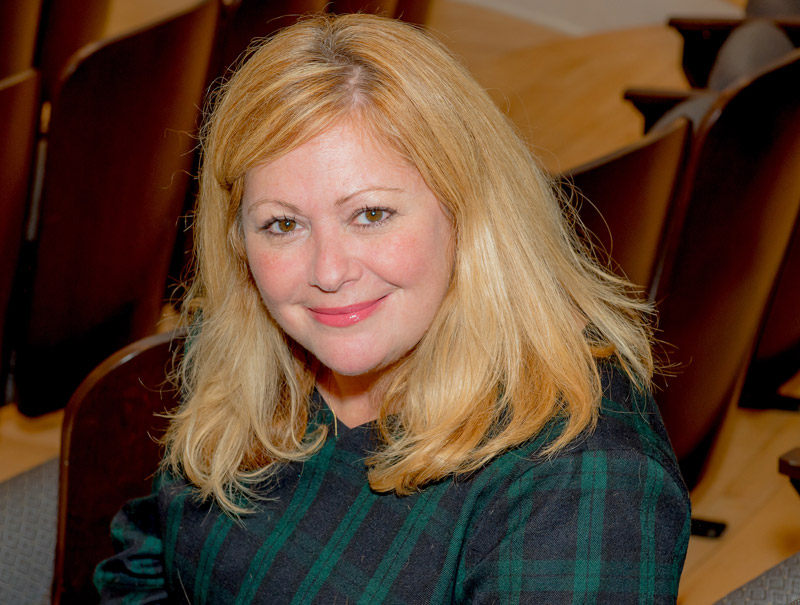
Melissa Silberman ’94, a first-generation college student, is an alumna of Vassar’s Exploring Transfer program and has spent her career expanding opportunities for others the way this program did for her.
“I am a poster child for people who haven’t had access to high-quality liberal arts colleges and benefit from programs like these,” she says.
Silberman grew up in the Louis Pink Houses, a public housing project in Brooklyn, the daughter of a single mother who never graduated from high school. Silberman started working at age 14 and was “grinding through Borough of Manhattan Community College, semester by semester,” when a professor recommended her for Exploring Transfer.
“I had the summer of my life,” she says, and she vowed, if she was accepted to Vassar, that “one of my goals would be to give back.”
She did get in, and graduated “feeling the power to help others.”
The English and education major went back to New York to teach. She was eventually hired as principal of a venerable Brooklyn vocational school, Automotive High, at the ripe old age of 31, becoming only the second female principal in the school’s 70-year history.
In a 2007 article published in the Vassar Quarterly, she noted that she had high standards for her career and for the Automotive High students. “I expect them to achieve, I expect them to compete nationally, and I expect them to go to college,” she said.
After her five-year tenure as principal, Silberman took a position in the New York City Department of Education as deputy executive director of the Office of Postsecondary Readiness. She immediately went to work reimagining career and technical education in the nation’s largest school district (it serves approximately 140,000 students each year).
After her time at the Department of Education, which included a stint as executive director of public giving, she came to realize that many high schools were not offering the resources or reinforcing the message that students from underrepresented communities can and should have access to higher education. So, in March 2013, she became executive director of CollegeSpring in New York, a California-based program that provides intensive SAT preparation assistance to juniors in low-income schools.
Unlike some programs that cherry-pick participants, Silberman says, “We’re not making the call deciding which kids should have access to services.” Instead, CollegeSpring goes into schools, serving the entire junior class, training teachers, and mentoring to support a curriculum designed to improve SAT scores and college-readiness across the board.
In six years, the program has increased students’ SAT scores an average of nearly 200 points, she says, helping many students get into a higher tier of college than they would have otherwise.
Activism in Education
After a long career in the fashion industry, Laurel Sturt ’77 followed her heart and became a teacher; her subsequent experience in New York City schools led her to also become a “badass” advocate for teachers and the educational system.
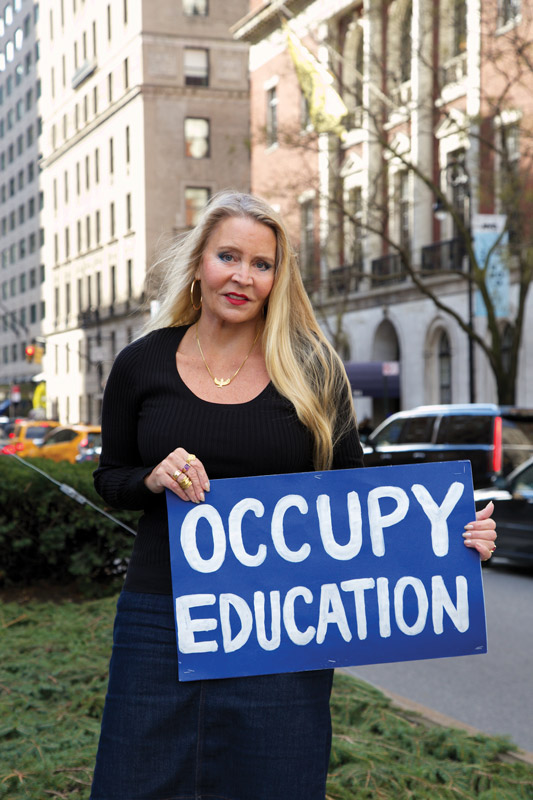
Data show that most urban areas— and their schools—are becoming more segregated by race and class. Sturt taught in a school in which 97 percent of the students were poor enough to qualify for free or reduced-price lunch, the federal poverty measure. These students were often burdened with unstable, sometimes tumultuous home lives that led to behavioral problems. Then they were stuffed 30 or more in a classroom that lacked educational amenities taken for granted elsewhere. Teachers were left to fend for themselves.
Her memoir, Davonte’s Inferno: Ten Years in the New York Public School Gulag, is a severe indictment of the current system. Her description of the day-to-day conditions in which she labored is withering—from the ancient school building to the horrible lunch food to the chaotic classrooms. The students, beset by unimaginable problems, were, at best, disinterested and, at worst, hostile.
“It was like being in a war—every day was a battle, and every class a skirmish,” she wrote.
Still, she is convinced that the favored strategy of the education reformers—high-stakes testing, the censuring of teachers, and the creation of more charter schools—is misguided and glossing over the real problem.
“The crux of the matter is the poverty that needs to be addressed,” Sturt says. “Poverty is the elephant in the room that nobody wants to deal with.”
As an art teacher, she bonded with many of the students and, she says, “I know I created some artists who will do it as a career. But I was overwhelmed.” She was also unhappy about not being allowed to teach the way she wanted. “I was frustrated,” Sturt says. “Some of the greatest museums in the world were a short subway ride away, but I couldn’t take [the students].”
As intolerable as she found the New York City schools, she doesn’t see charter schools as the answer. Many charters, she says, are “test-prep factories” that do not prepare students for college.
The answer, for her, is much more complex—and more difficult to attain: schools and housing that are racially and socioeconomically integrated. She cites research showing that low-income students do much better in schools in which a majority of their classmates are not poor. Another strategy is universal pre-kindergarten, so that students don’t fall behind to begin with.
“I went into teaching with extreme idealism,” she says, “excited about how many lives I could change.” She has turned her disappointment into a crusade for more public awareness of the challenges teachers face.
Convinced that policymakers are completely on the wrong track, she now is a serious activist. Sturt is one of the leaders and online moderators of the Badass Teachers Association, a national movement with 55,000 members that aims to counteract what it sees as destructive aspects of the school reform agenda, including high-stakes testing and the privatization of the public system.
In July, she participated in a rally outside the U.S. Department of Education in Washington, DC, protesting the Obama administration’s policies supporting Common Core standards, high-stakes testing, and new teacher evaluation requirements. Six leaders of the group met with Education Secretary Arne Duncan.
“I was in charge of choreographing and teaching a flash mob,” she says. “We all danced to the song ‘Brave’ to support beleaguered teachers demoralized by the current climate of attack on their unions and the profession.”
Experiential Learning
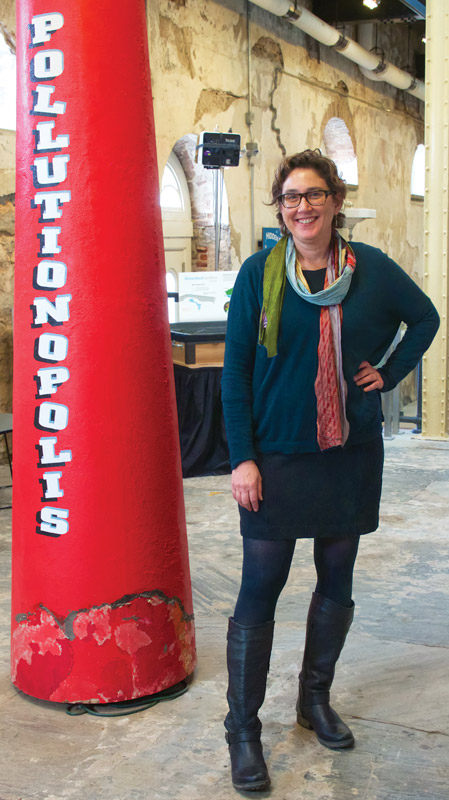
Ellen Freedman Schultz ’81 has spent most of her career running educational programs designed to challenge and engage students to think differently about their built and natural environment. Her goal throughout has been to inspire teachers and students to embrace the city and the environment as their classroom.
For the past 11 years, Schultz has been the associate director for education at the Fairmount Water Works, the education center of the Philadelphia Water Department. For most of that time, she has been developing programming for organized field trips and other enrichment activities.
But she had a growing desire to have an impact on what teachers and students were doing every day. She developed a hands-on, project-based activity guide for educators about understanding Philadelphia’s urban watershed. With a major grant from the William Penn Foundation, she is working with middle-grade teachers from nine Philadelphia schools to create a new middle-years curriculum.
It is a model for the kind of experiential learning often denied to urban students, despite the richness of their surroundings. Students will get the chance to do things they never would have otherwise, starting in their own schoolyard. There, they will monitor storm drains during and after rainstorms, calculating runoff and investigating ways to direct it.
They will also set up experiments related to soil and plants along the river; observe, write about, and photograph the sights, sounds, and smells of the waterways. They may even kayak or canoe in order to experience the river from another vantage point.
She hopes the curriculum will be fully in place by 2017.
Schultz’s original goal was to create more informed citizens around the urgent issue of maintaining clean and available water for the planet’s population. But she also knows that having children ask questions and search for answers can pique their interest around science, math, history, and language and make them more engaged, ambitious students—all part of the curriculum’s multidisciplinary approach.
“I am trying to infuse what the teachers are doing in the classroom with real-world context,” says the New York native. “We’re doing real stuff in the trenches.”
Skill-Based Foundations

Many urban students, discouraged by high unemployment rates, have trouble making the connection between school and their futures. Many drop out of school, which makes it even harder to get jobs. It’s a vicious cycle.
Enter Scott Mendelsohn ’93, senior director of work readiness and director of the Work-Based Learning Resource Center in the Office of Postsecondary Readiness in the NYC Department of Education.
“A successful education has to prepare you to connect and be a part of economic systems,” says Mendelsohn. In his role, he connects high school students with opportunities to learn about careers through mentorship, job shadowing, and internships—both paid and unpaid. He invites mentors and coaches from industry to visit students in schools. He also meets with industry commissions, school representatives, and business leaders to develop experiential programs and activities so students can learn skills and build relationships they will need after graduation.
New York City’s mayor, Bill de Blasio, is looking to unify work programs across city agencies and develop real career pathways for young people, says Mendelsohn, who works with every kind of company imaginable—from the traditional auto shop to cutting-edge industries using 3D technology—to make that possible. This year alone, he has worked with the city’s Department of Small Business Services to connect 140 students from 16 schools to high-demand jobs in transportation, manufacturing, and construction. Each summer, he works with Bank of America to provide a combination of summer school and internship placements in IT, media, and graphics for 120 students from six schools across the city through the Career and Technical Education (CTE) Summer Scholars program.
Mendelsohn points to research that students who attend a CTE school have better high school graduation rates than their peers, and while they attend college at about the same rate, they have better persistence rates once there.
Students reap other benefits, too. During the summer program where the center places students in IT and graphics programs, a girl from an immigrant family worked at a nonprofit in Harlem. Her father was very concerned about her traveling alone in the city.
“We ended up placing her in our office, using her photo and media skills to help document the internship program. She ended up traveling with our site monitors to many locations, an incredible range,” says Mendelsohn. “You could really see her coming into her own. At the end of the summer, we had a graduation ceremony and the father apologized for being overanxious; he saw how much his daughter had grown. The city was open to her and her family in ways it hadn’t been before.”
When kids participate in an internship, Mendelsohn says, “They come back as adults. They stand taller, they look you in the eye, they see how they can make a difference, and, all of a sudden, a boring course seems a lot more interesting. School has relevance, it has context. Life doesn’t stop at graduation or the Regents exam—they have a line of sight toward some sort of future and a place in the world.”
Facing the Needs of an Immigrant Community
Kelly Beck ’89 is the associate director of the Haas Center for Public Service at Stanford University and runs the Education Partnerships division, which comprises four mentoring/tutoring programs connecting Stanford students with children in the ethnically diverse community of East Palo Alto, California.
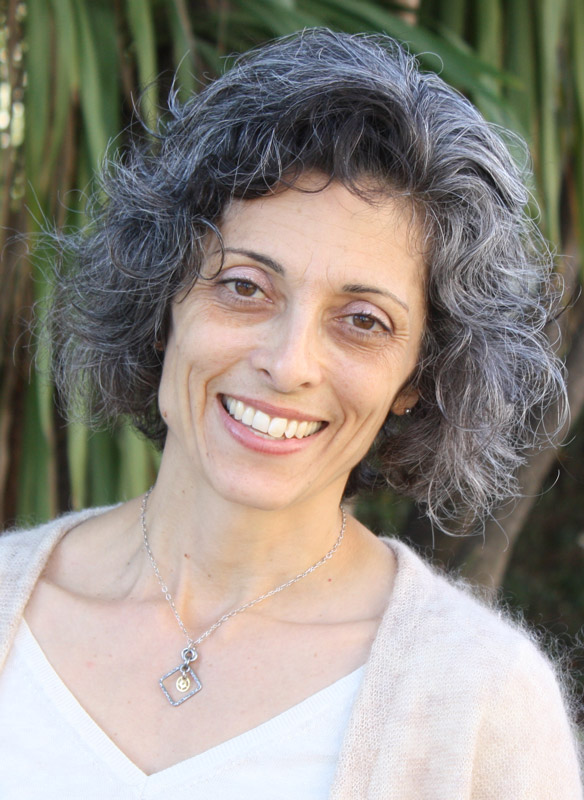
It’s a community where 40 percent of the residents are foreign born and about 70 percent of households speak languages other than English. In the Ravenswood City School District, which serves this area, 67 percent of students are English language learners and 90 percent are considered low-income.
The Education Partnerships programs include Preschool Counts, in which Stanford students teach math to preschool students; Ravenswood Reads, in which Stanford students teach reading to first- through third-graders, most of whom are learning English; Science in Service, where Stanford students mentor fourth- through eighth-graders in hands-on, project-based science activities; and East Palo Alto Stanford Academy, in which Stanford students provide English, math, and enrichment classes to middle school students as well as one-on-one mentorship.
Altogether, the initiatives reach about 250 youths a year.
After getting her BA in astronomy and physics at Vassar, Beck earned an MS from the University of Wyoming in physics and education. She began her work at the Haas Center as the director of the Science in Service program, and much of her philosophy for the Education Partnerships programs derives from that experience. Reflecting on Science in Service, Beck says, “The instruction that we do is based on inquiry-based learning to get students to ask their own questions. It’s about creating situations that confound the learner’s expectations. We want learners to say ‘Oh, that isn’t how it works, it works this way.’ First you set up a situation that compels the student to be curious and ask a question and then guide the student in devising an experiment to test it, to draw an understanding about it, to investigate it.”
She recalls an elementary school student who was amazed at volume conservation, how the same amount of water could fit into a tall, narrow container and a short, wide one. The student was so amazed that he asked “Can I do it again?” over and over.
He did it five or six times. It’s being attentive to those moments of discovery that can change the trajectory of a child’s education.
The benefits of mentoring go both ways. “Our Stanford student mentors come back and tell us how their experience in Education Partnerships was a turning point for them,” Beck says. “Years later our alumnae/i who have become classroom teachers tell us that being a mentor in Education Partnerships was the defining experience of their undergraduate education and the inspiration to become a teacher. Similarly, we’ve seen lasting impact on the youth. I remember running into a teen out in the community with whom I worked in Science in Service many years earlier when he was very young. He said, ‘You showed us how cornstarch and water together are like solid and liquid and we called it non-Newtonian fluid. That science we did was pretty cool!’ Eight years after the experience—that’s the outcome we strive for, and a very good day.”
Stepping into the “Corps” of Education
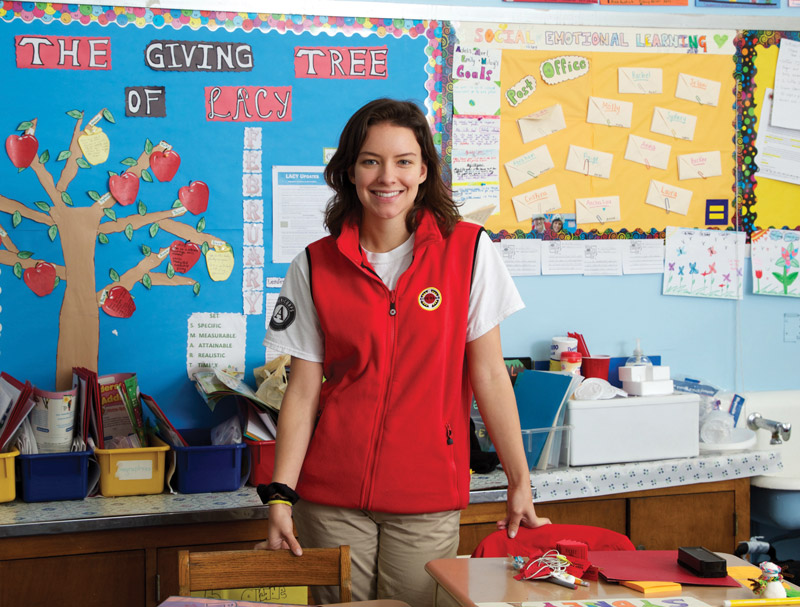
Anna Schlosser ’14 is working at a public school in Astoria, New York, as a member of City Year New York. It’s a program affiliated with AmeriCorps that brings young people from ages 17 to 24 to work in underserved schools. She is a tutor and a mentor to fifth grade students who, according to their state test scores, have been identified as at risk for dropping out of high school. She also coordinates the afterschool program, which offers recreational sports, dance, and arts, as well as character education and social/emotional learning. Each month features different themes like gratitude, respect, and conflict resolution. Sometimes students play theater games—one student created a superhero named Agent 3, whose power is the ability to resolve conflicts.
Schlosser, who hails from Bergen County, New Jersey, switched to the educational studies major at Vassar when it was created her senior year and focused on the sociology of education, educational policy, and advocacy for public schools. She regarded City Year as a great opportunity to see if she had the strength to be a teacher. Even though teaching can be stressful, she loves her work.
“My experience with City Year has taught me that I am certainly in the right place,” she says. “Working alongside and learning from my students is what makes me excited about starting each day. Their energy for life and thirst for knowledge is contagious. I can’t imagine doing anything else.”
But it is in building relationships and giving students extra attention that the City Year members contribute the most. Schlosser says students are more excited about coming to school when they have someone who notices they’re there and cares about how they’re doing, how their work is going, how their weekend went. “When you ask them, they say, ‘I love that City Year greets us in the morning, that City Year sees us at breakfast.’ It definitely does make a difference in schools, more than I thought coming in.”
